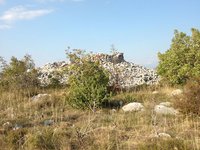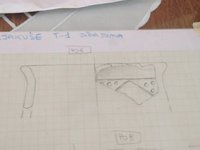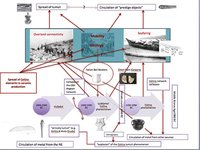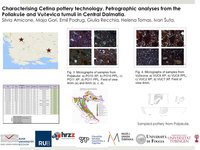Cetina features comprise distinctive ceramics style, use of barrows as funerary structures, and long-distance mobilization of prestige objects with high symbolic value, representing thus an outstanding case study to understand the relationship between people and objects on the move, and to assess the impact that migration has on cultural and societal changes. The spread of Cetina elements across the central Mediterranean was widely debated by scholars in the 1990s, and currently Cetina is interpreted as the common denominator behind the circulation of objects, people and ideas by way of both seaborne and overland networks. Having abandoned the definition of Cetina as a bounded culture, the interpretative model of what is now called the Cetina phenomenon suggests a migration of small groups connected to the circulation of metals and other resources. However, it is difficult to understand the nature of the Cetina phenomenon, which resources were involved and played a key role, and the directions of these contacts. This project will explore the role of material and immaterial resources in the spread of Cetina features by means of both seaborne and overland mobility, and in the construction of materialized environments and different “Cetinascapes” across the Mediterranean and the western Balkans. Combining ceramic provenience studies to other hard science based methods, and by using Network Analysis and Agent-Based Modeling this study will test this model and will provide an explanation for mobility, cultural and social transformations and phenomena of acculturation in the context of 3rd mill. economy.
Project informations
Ruhr-Universität Bochum, Institut für Archäologische Wissenschaften
06/2017 – 05/2020
Deutsches Bergbau-Museum Bochum, Forschungsbereich Montanarchäologie
Ruhr-Universität Bochum, Lehrstuhl für Makroökonomie



